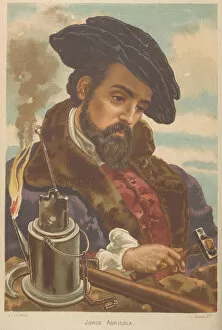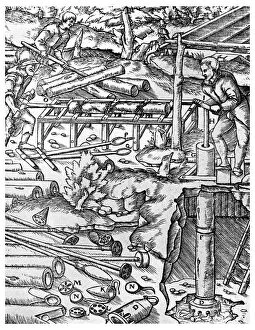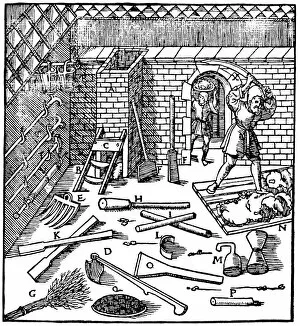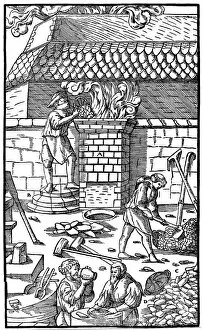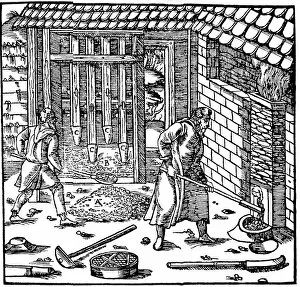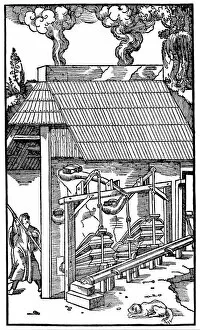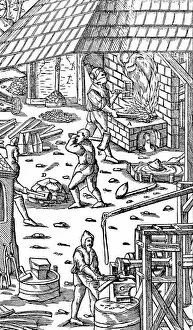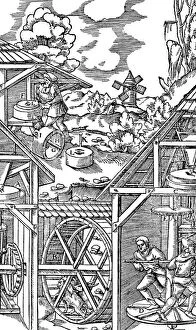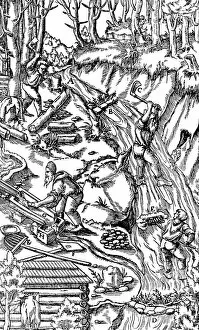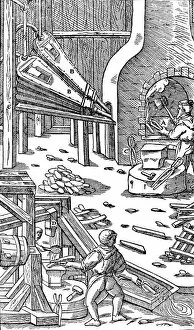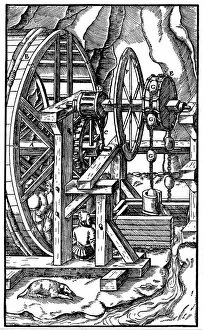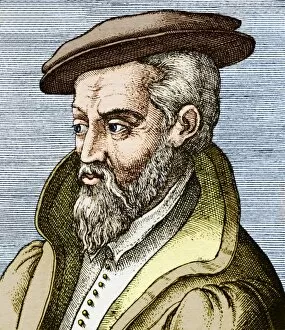Georg Bauer Collection
Georg Bauer, also known as Georgius Agricola, was a remarkable 16th-century German physician, mineralogist, and metallurgist
For sale as Licensed Images
Choose your image, Select your licence and Download the media
Georg Bauer, also known as Georgius Agricola, was a remarkable 16th-century German physician, mineralogist, and metallurgist. His contributions to the field of mining and refining were truly groundbreaking. In his renowned work "La ciencia y sus hombres" published in 1879, Bauer's expertise is highlighted. He delved into various aspects of the industry, including silver refining in his masterpiece from 1556. Bauer's passion for prospecting metals is evident through his works like "Prospecting for metals. " This timeless piece from 1956 showcases his dedication to uncovering valuable resources hidden beneath the earth's surface. Before the advent of steam engines, Bauer ingeniously devised elm tree pumps to drain mines effectively. His innovative approach is vividly depicted in "Making and using elm tree pumps to drain mines before the days of the steam engine. " Another fascinating technique employed by Bauer was producing salt by evaporating natural brine with burning charcoal. This ancient method can be traced back to his experiments documented in 1556. As an accomplished physician and metallurgist, Bauer excelled at smelting ores such as gold, silver, copper, and lead. His expertise shines through pieces like "Smelting of ores" and "Lead smelting, " both dating back to 1556. One of Bauer's notable achievements was separating lead from silver or gold using a cupellation furnace. The meticulous process he developed can be observed in his work dated back to 1556. To further advance iron ore smelting techniques during that era, Bauer designed a blast furnace that revolutionized production methods. This monumental invention paved the way for industrial progress worldwide. Bauer's stamp for breaking copper cupellation cakes played a crucial role in refining processes during that time period. Its significance can be seen through its depiction in artwork from 1556. Stamping and roasting ore became an essential step in extracting metal, thanks to Bauer's innovative approach.


